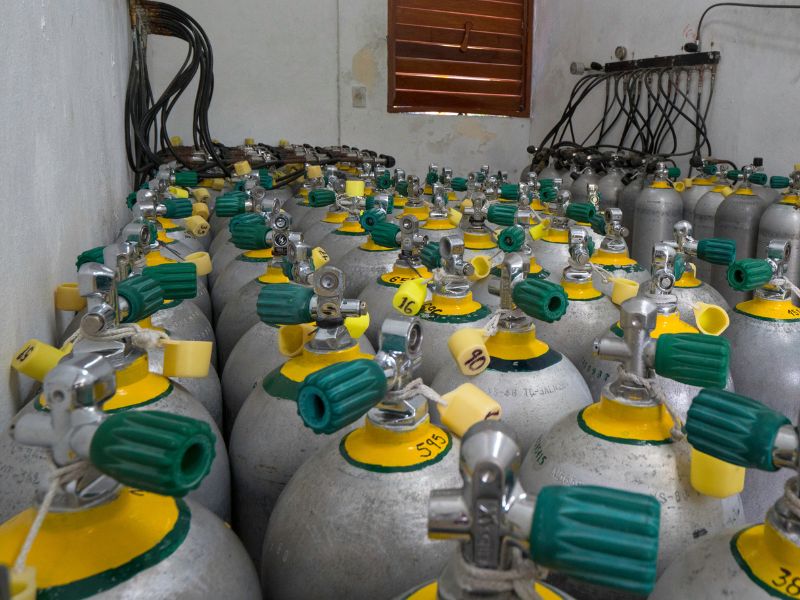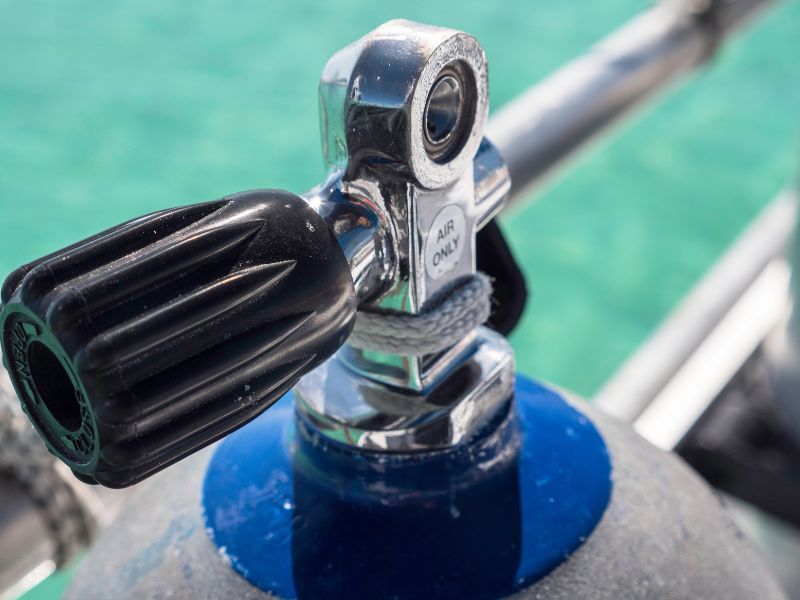2.2. Scuba Tanks Steel vs Aluminum: Buoyancy & Trim
But just comparing surface weight can be misleading, because underwater something curious happens:
The “scuba tank weight” that really matters is the one underwater.
Or better said, Archimedes’ principle: the mass of the object minus the weight of the water it displaces.
Okay, okay, we won’t get too technical. But this is important to know.
Since steel tank walls are thinner and denser, they displace less water than the thick walls of aluminum cylinders.
In plain terms: at the start of a dive (when full), a steel tank’s buoyancy is much more negative than aluminum.
And it gets worse as we use air, because an aluminum tank eventually becomes positively buoyant
It becomes complicated as we consume air, because the aluminum tank can achieve positive buoyancy, or what is the same, the weight becomes slightly positive: around +4 a +4,4 lb (+1,8 a +2,0 kg).
A steel cylinder, on the other hand, although it has changes, remains negative almost all the time.
And here’s the classic question in the steel vs aluminum debate:
“What’s the big deal? I’ll just add more weight.”
Yes, you could add 4–8 lb. (1.8–3.6 kg).
But think about this, especially if you dive in warm water:
In the tropics, you’re not wearing a drysuit or thick neoprene.
You’re barely in wetsuit, with very little natural positive buoyancy.
Here the steel vs aluminum comparison changes completely.
Do you know what happens if you carry a steel tank that stays negative the whole time?
Exactly: you become a human anchor.
With aluminum:
- Yes, it turns slightly positive at the end.
- Yes, you need a little extra weight.
- But during the dive, you maintain a much more natural balance for tropical diving.
You don’t start the dive “sinking,” nor do you have to inflate your BCD like a float from minute one.
Extra Weight at the Start with Aluminum? Not as Much as You Think
With an AL80, the small extra weight only compensates for its final buoyancy.
But in warm water, where your suit contributes almost nothing to buoyancy, that extra weight doesn’t overburden you.
It keeps you in the sweet spot: not floating during the safety stop…
without turning into a lead block the rest of the time.
In the practical steel vs aluminum tank debate, this is exactly why aluminum feels more comfortable in the Caribbean.
And Trim?
With steel, the tank acts as a powerful fixed ballast on your back.
That’s useful if you do technical diving or carry heavy gear.
So why do technical divers prefer steel?
Because their world is different:
Drysuits, cold temps, penetration dives, doubles, stages, symmetry, absolute stability… and with steel, they save extra weight.
But for tropical recreational divers, aluminum’s behavior, including its buoyancy change, isn’t a drawback, it’s an advantage.










